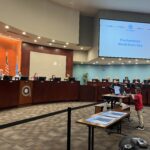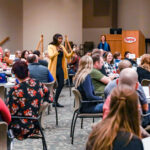Have you ever heard of the term boundary rider? What exactly is a boundary rider? Boundary riders are people who are bridges—bridging people, ideas, concepts, etc. together—and they tend to ride the boundaries of things due to their abilities to see things in a creative way.
They actually echo the concept in Frans Johansson’s book, The Medici Effect, that “innovation starts at the intersection of fields, disciplines, and cultures.”
Those who know how to ride the boundaries of groups and “connect the diamonds” are what Malcom Gladwell called your powerhouse connectors.
These are the people who have multiple ties to multiple groups and who gather people together from different disciplines to exchange ideas. They are the bees in the garden of creativity. They naturally pass information between people they know and make connections that hover in other people’s blind spots.
It’s these gatherings—these meetings of the minds—that elevate people to new levels of creative thinking.
Now be aware. Bridges connect well, but they also get stepped on! When you are well advanced in intercultural development work, people may look to you for assistance or understanding on how to connect well with people from various cultures.
People with high intercultural awareness and creativity may also experience little tolerance for people who engage with diversity from other mindsets. If you are in an intercultural mindset interacting with someone from a mono-cultural mindset, like denial or polarization, you might find it difficult to get ideas across.
You might become frustrated when people don’t see obvious connections that you observe. You will have to work on your skills of bridging these boundary connections and learn how to span across boundaries.
BOUNDARY RIDERS ARE BOUNDARY SPANNERS
People who are boundary riders tend to be strong in boundary spanning, which is taking action on your ability to cross cultural lines. Boundary spanning is when leaders work with a great variety of people from differing positions, backgrounds, and locations.
Now is the time we need to not only be aware of any deficits or gaps that may be existent in our areas of work, especially within leadership, but to mind those gaps.
The gap(s) will directly affect the creative potential of our people and the organization as a whole.
How will you focus on being a bridge within your community and/or organization? What action(s)—for instance, breaking out of our silos—can you take and incorporate into helping you span across boundaries?
Take a little time today and think about the different ways that can help you interact and connect with other cultures.





